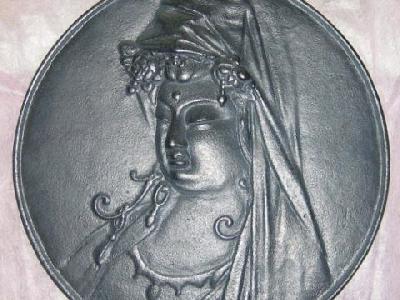|
Takaoka copperware is a traditional handicraft of Takaoka City in Toyama prefecture, with a history of four centuries. Fine, smooth surfaces, subtle coloring, delicate patterns and graceful shapes; these are the specialties of Takaoka copperware.
Some 400 years ago, when Maeda Toshinaga built Takaoka Castle, the 2nd Kaga domain head set up a foundry in Kanaya, today's Takaoka city, in order to ensure prosperity for the town.
At first, the main products cast in copper, other than orders from the domain, were ironware such as temple bells, garden lanterns, farming implements and kettles. After that, small copper items for Buddhist altars came to be made. In the Meiji and Taisho periods, many kinds of copperware were produced, such as braziers, items for tea ceremony and ornamental goods.
Takaoka copperware became highly prized all over Japan. In 1873, it was critically acclaimed at the World Exposition in Vienna and gained world recognition.
In Showa 50, Takaoka district was designated as a production area of a Traditional National Handicraft for the first time in Japan.
Some 400 years ago, when Maeda Toshinaga built Takaoka Castle, the 2nd Kaga domain head set up a foundry in Kanaya, today's Takaoka city, in order to ensure prosperity for the town.
At first, the main products cast in copper, other than orders from the domain, were ironware such as temple bells, garden lanterns, farming implements and kettles. After that, small copper items for Buddhist altars came to be made. In the Meiji and Taisho periods, many kinds of copperware were produced, such as braziers, items for tea ceremony and ornamental goods.
Takaoka copperware became highly prized all over Japan. In 1873, it was critically acclaimed at the World Exposition in Vienna and gained world recognition.
In Showa 50, Takaoka district was designated as a production area of a Traditional National Handicraft for the first time in Japan.
| [+ADDRESS] | 
|












